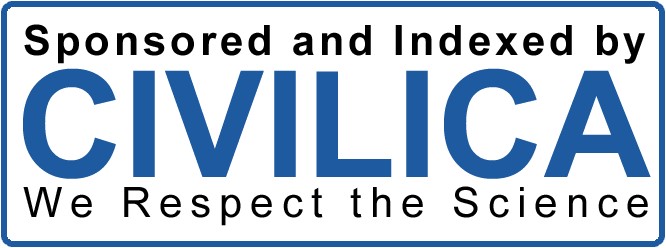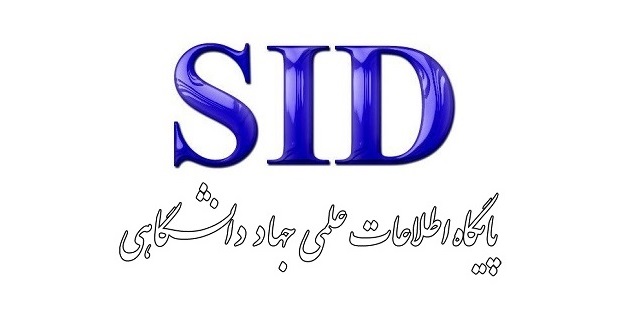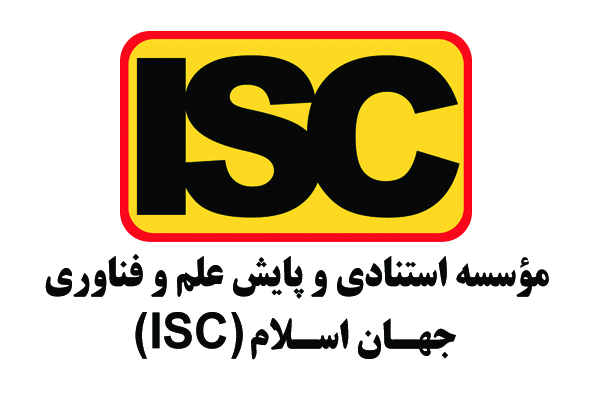طراحی مدل تطبیقی واكاوی پیشایندها و پسایندهای سكوت سازمانی در دیوان محاسبات كشور مورد مطالعه: مناطق ششگانه
کلمات کلیدی:
پیشایندها و پسایندهای سکوت سازمانی, سکوت سازمانی, مدیران و معاونین , دیوان محاسباتچکیده
در سالهای اخیر، بهدلیل تغییراتی که در سازمانها و محیط آنها ایجاد شده است، اهمیت نیروی انسانی افزایش یافته و توجهها به پدیده سکوت سازمانی جلب شده است. این پژوهش با هدف طراحی مدل تطبیقی برای بررسی پیشایندها و پسایندهای سکوت سازمانی در دیوان محاسبات کشور انجام شده است. روش پژوهش از نظر هدف، کاربردی و از نظر جمعآوری دادهها، ترکیبی است. در بخش اول، روش پدیدارشناسی کیفی و در بخش دوم، روش کمی توصیفی-پیمایشی استفاده شده است. در مرحله کیفی، برای شناسایی پیشایندها و پسایندهای سکوت سازمانی، مصاحبههای عمیق نیمهساختاریافته با مطلعین کلیدی و خبره انجام شد. اسناد بالادستی و مستندات کتبی موجود تحلیل و طبقهبندی شدند و پیشینه بهطور گسترده مورد بررسی قرار گرفت. دادههای مربوط به مؤلفهها و شاخصها از طریق مصاحبههای نیمهساختاریافته با افراد آگاه و صاحبنظر جمعآوری شد تا رسیدن به اشباع نظری، مفاهیم استخراج و دستهبندی شدند و ارتباط بین دستهها مشخص گردید. پرسشنامهای محققساخته بر اساس این یافتهها تهیه و در نمونه آماری مورد آزمون قرار گرفت. جامعه آماری بخش کیفی شامل مدیران و معاونین ادارات نواحی ششگانه بود که 40 نفر بهصورت هدفمند انتخاب شدند و پس از مصاحبه با 31 نفر، اشباع نظری حاصل شد. همچنین، اسناد و مدارک علمی، کتب، گزارشات و مقالات علمی در سطح ملی و بینالمللی مورد بررسی قرار گرفت. جامعه آماری بخش کمی شامل 1000 نفر از کارکنان ادارات نواحی ششگانه بود که با استفاده از فرمول کوکران، 278 نفر بهصورت تصادفی انتخاب شدند. در مرحله کیفی، تحلیل دادههای مصاحبه با تکنیک استیویك- كولایزی-كن انجام شد و در بخش کمی، از نرمافزارهای SPSS و Smart-PLS برای تحلیل دادهها استفاده شد. در بخش کیفی، 110 کد کلیدی برای پیشایندها شناسایی و با ادغام موارد مشابه و حذف تکراریها، 32 معنی فرمولهشده حاصل شد که به دو خوشه (عوامل سازمانی و مدیریتی) تقسیم شدند. برای پسایندها، 92 کد شناسایی و با ادغام موارد مشابه و حذف تکراریها، 34 معنی فرمولهشده بهدست آمد که به دو خوشه (عوامل فردی و اجتماعی) تقسیم شدند. نتایج آزمون تحلیل واریانس یکطرفه نشان داد که تفاوت معناداری بین گروهها از نظر سکوت سازمانی وجود ندارد. نتایج تحلیل عاملی با نرمافزار پیالاس نیز نشان داد که مقیاس اندازهگیری برای همه شاخصهای تحلیل عاملی در سطح مطلوب و قابل قبول است؛ بنابراین، ابزار اندازهگیری از کیفیت مناسبی برخوردار است و مؤلفههای پرسشنامه بهخوبی توانایی سنجش سکوت سازمانی را دارند. همچنین، بارهای عاملی از طریق محاسبه مقدار ارتباط شاخصهای یک سازه با آن سازه محاسبه شدند که مقادیر برابر یا بیشتر از 0.4 بودند، که نشاندهنده پایایی قابل قبول مدل اندازهگیری است.
دانلودها
مراجع
Akan, B. B., & Oran, F. Ç. (2017). Akademisyenlerin Örgütsel Sessizlik Algilari: Konuya Ilişkin Bir Uygulama.
Kırklareli Üniversitesi İktisadi ve İdari Bilimler Fakültesi Dergisi, 6(5), 72-90.
https://dergipark.org.tr/en/pub/klujfeas/issue/32183/349159
Armandei, M., Vaziri, M., & Adli, F. (2016). An investigation of the factors influencing organizational silence from the
perspective of employees. The Journal of New Thoughts on Education, 12(2), 115-144.
https://doi.org/10.22051/jontoe.2016.2393
Arshad, M. A., & Ullah, S. (2023). Culture of Silence in an Organization and How it Effect the Organization and
Employees’ Performance. In.
Bentiba, Z., & Khelil, S. (2022). Organizational silence (Basic concepts and its effects). IJEP, 5(2), : 34-47.
https://www.ijep.dz/index.php/IJEP/article/view/74
Bryant, M., & Wolfram Cox, J. (2004). Conversion stories as shifting narratives of organizational change. Journal of
Organizational Change Management, 17(6), 578-592. https://doi.org/10.1108/09534810410564569
Çakici, Y. d. d. a. (2008). Örgütlerde sessiz kalınan konular sessizliğin nedenleri ve algılanan sonuçları üzerine bir
araştırma. Çukurova Üniversitesi Sosyal Bilimler Enstitüsü Dergisi, 17(1), 117-134.
https://dergipark.org.tr/en/pub/cusosbil/issue/4378/60013
Çakıcı, Y. d. d. a. (2007). Örgütlerde sessizlik: Sessizliğin teorik temelleri ve dinamikleri. Çukurova Üniversitesi Sosyal
Bilimler Enstitüsü Dergisi, 16(1), 145-162. https://dergipark.org.tr/en/pub/cusosbil/issue/4376/59941
Cetin, A. (2020). Organizational silence and organizational commitment: a study of Turkish sport managers. Annals of
Applied Sport Science, 8(2), 0-0.
http://aassjournal.com/browse.php?a_id=830&slc_lang=en&sid=1&printcase=1&hbnr=1&hmb=1
Danaeefard, H., & Panahi, B. (2010). An analysis of employee’s attitudes in public organizations: explanation of
organizational silence climate and silence behavior. Transformation management journal, 2(3), 1-19.
https://doi.org/10.22067/pmt.v2i3.4253
Dyne, L. V., Ang, S., & Botero, I. C. (2003). Conceptualizing Employee Silence and Employee Voice as
Multidimensional Constructs. Journal of Management Studies, 40(6), 1359-1392. https://doi.org/10.1111/1467-
00384
Erigüç, G., Özer, Ö., Sonğur, C., & Turaç, İ. S. (2014). Bir devlet hastanesinde hemşirelerde örgütsel sessizlik üzerine
bir araştırma. Çankırı Karatekin Üniversitesi İktisadi ve İdari Bilimler Fakültesi Dergisi, 4(2), 61-84.
https://dergipark.org.tr/en/pub/ckuiibfd/issue/32903/365521
Halis, M., & Ay, D. A. (2017). Kurumsallaşma Düzeyinin Örgütsel Sessizlik Üzerine Etkisi: Bir Araştirma. Cumhuriyet
Üniversitesi İktisadi ve İdari Bilimler Dergisi, 18(2), 43-62. https://dergipark.org.tr/en/download/article-file/383177
Hassani, S., Ahmadi, S. A. A., Sarmast, B., & Alvedari, H. (2020). Designing a Comprehensive Organizational Silence
Model Based on the Five Pillars of the Organization in Selected State Universities in Tehran. Public Organizations
Management, 8(2), 97-112. https://doi.org/10.30473/ipom.2019.48652.3804
Hedin, U.-C., & Månsson, S.-A. (2012). Whistleblowing processes in Swedish public organisations—complaints and
consequences. European Journal of Social Work, 15(2), 151-167. https://doi.org/10.1080/13691457.2010.543890
Jones, A., & Kelly, D. (2014). Deafening silence? Time to reconsider whether organisations are silent or deaf when things
go wrong. BMJ Quality & Safety, 23(9), 709-713. https://qualitysafety.bmj.com/content/23/9/709.short
Küçükeşmen, E., & Çarıkçı, İ. (2018). ÖRGÜTSEL ADALET ALGISI VE ÖRGÜTSEL BAĞLILIĞA ETKİSİ: KAMU
ÇALIŞANLARI ÜZERİNE BİR ARAŞTIRMA. Uluslararası İktisadi ve İdari Bilimler Dergisi, 4(1), 24-44.
https://doi.org/10.29131/uiibd.358527
Milliken, F. J., Morrison, E. W., & Hewlin, P. F. (2003). An Exploratory Study of Employee Silence: Issues that
Employees Don’t Communicate Upward and Why. Journal of Management Studies, 40(6), 1453-1476.
https://doi.org/10.1111/1467-6486.00387
Morrison, E. W., & Milliken, F. J. (2000). Organizational Silence: A Barrier to Change and Development in a Pluralistic
World. The Academy of Management Review, 25(4), 706-725. https://doi.org/10.2307/259200
Nikmaram, S., Yamchi, H. G., Shojaii, S., Zahrani, M. A., & Alvani, S. M. (2012). Study on relationship between
organizational silence and commitment in Iran. World Applied Sciences Journal, 17(10), 1271-1277.
Iran/links/57d6528708ae601b39aa765a/Study-on-Relationship-Between-Organizational-Silence-andCommitment-in-Iran.pdf
Park, C., & Keil, M. (2009). Organizational Silence and Whistle-Blowing on IT Projects: An Integrated Model. Decision
Sciences, 40(4), 901-918. https://doi.org/10.1111/j.1540-5915.2009.00255.x
Pinder, C. C., & Harlos, K. P. (2001). Employee silence: Quiescence and acquiescence as responses to perceived injustice.
In Research in Personnel and Human Resources Management (Vol. 20, pp. 331-369). Emerald Group Publishing
Limited. https://doi.org/10.1016/S0742-7301(01)20007-3
Podsakoff, P. M., MacKenzie, S. B., Paine, J. B., & Bachrach, D. G. (2000). Organizational Citizenship Behaviors: A
Critical Review of the Theoretical and Empirical Literature and Suggestions for Future Research. Journal of
Management, 26(3), 513-563. https://doi.org/10.1177/014920630002600307
Sadeghi, M., & Razavi, M. R. (2020). Organizational silence, organizational commitment and creativity: The case of
directors of Islamic Azad University of Khorasan Razavi. European Review of Applied Psychology, 70(5), 100557.
https://doi.org/10.1016/j.erap.2020.100557
Tanhaei, M. H., Nasre Esfahani, A., Nilipour Tabatabaei, S. A., & Akhavan Sarraf, A. R. (2018). Recreation of
antecedents and consequences of employees' organizational silence case study: Isfahan Municipality. Journal of
Applied Sociology, 29(4), 147-166. http://jas.ui.ac.ir/article_22969_en.html
Vakola, M., & Bouradas, D. (2005). Antecedents and consequences of organisational silence: an empirical investigation.
Employee Relations, 27(5), 441-458. https://doi.org/10.1108/01425450510611997
Yıldırım, A., & Çarıkçı, O. (2017). MESLEKİ VE TEKNİK ANADOLU LİSELERİNDE GÖREV YAPAN EĞİTİM
YÖNETİCİSİ VE ÖĞRETMENLERİN ÖRGÜTSEL SESSİZLİK DÜZEYLERİNİN İNCELENMESİ [Anatolian
vocational and technical education high school of teachers and manager investigation of organizational levels of
silence]. Süleyman Demirel Üniversitesi Vizyoner Dergisi, 8(19), 33-43. https://doi.org/10.21076/vizyoner.345090

دانلود
چاپ شده
ارسال
بازنگری
پذیرش
شماره
نوع مقاله
مجوز
حق نشر 2024 تکنولوژی در کارآفرینی و مدیریت استراتژیک

این پروژه تحت مجوز بین المللی Creative Commons Attribution-NonCommercial 4.0 می باشد.










